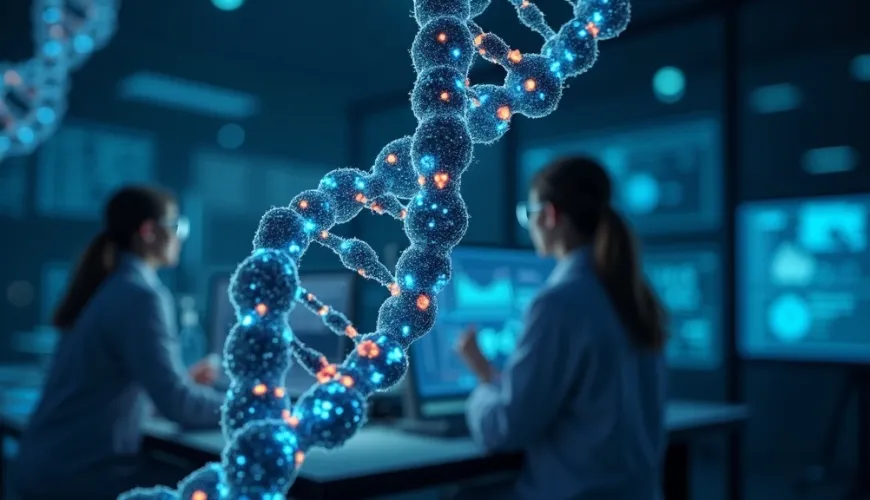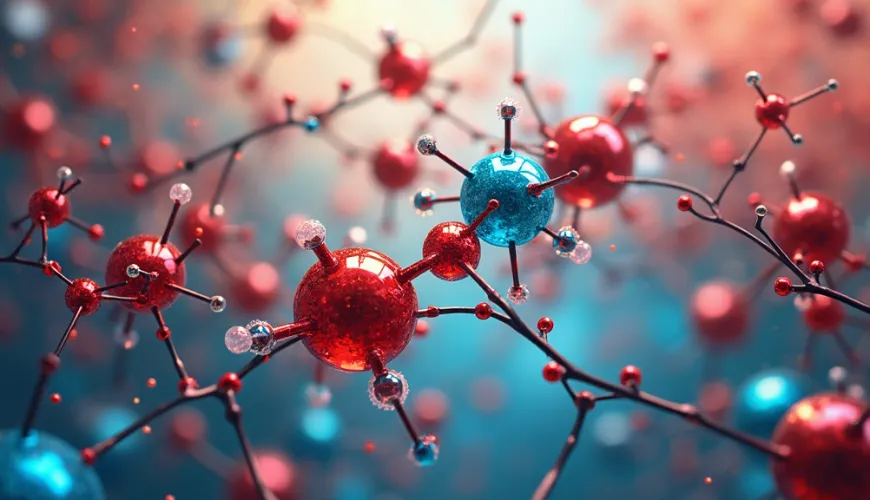TL;DR:
Intramolecular forces are the bonds that hold atoms together within a molecule.
They're stronger than intermolecular forces and define a substance's properties.
From water to DNA, these forces shape everything around and within us.
Definition and Core Concepts
At its core, intramolecular forces refer to the chemical bonds that connect atoms within a molecule. Unlike intermolecular forces, which act between molecules, intramolecular forces are responsible for the molecule's internal structure, stability, and overall behaviour.
These forces include covalent, ionic, metallic, and sometimes coordinate bonds, all of which involve the sharing or transfer of electrons. Without these interactions, molecules as we know them wouldn't exist.
For example, think of water (H₂O): the hydrogen and oxygen atoms are held together by strong covalent bonds. That's an intramolecular force in action. On the other hand, the way water molecules cling together in a glass is due to intermolecular attractions like hydrogen bonding.
If you're just diving into chemistry or brushing up for deeper learning, this is one of those foundational topics that helps unlock how everything from steel to cells stays together.**
Types of Intramolecular Bonds
There are several primary forms of intramolecular bonding, each with its own unique characteristics and roles in chemistry.
Covalent Bonds
The most common type, covalent bonds involve atoms sharing pairs of electrons. This is how most organic molecules form, from simple gases like methane (CH₄) to complex proteins.
In covalent bonding, the strength and directionality of the bond give molecules their shape and function. For instance, the double helix of DNA relies on very specific covalent bonds in the sugar-phosphate backbone.
Ionic Bonds
Ionic bonds occur when one atom donates one or more electrons to another, resulting in positively and negatively charged ions that attract each other. This usually happens between metals and non-metals.
Table salt (NaCl) is a classic example. Sodium gives up an electron to chlorine, creating a tightly bound lattice of ions—held together by strong electrostatic intramolecular forces.
Metallic Bonds
In metals, atoms share electrons in something like an electron cloud. This allows electrons to move freely, explaining why metals conduct electricity and are malleable.
Steel, a mix of iron and carbon, maintains its strength due to metallic bonding among iron atoms. This makes it highly valuable in construction and manufacturing.
Coordinate (Dative Covalent) Bonds
These are a special case of covalent bonding where both electrons in the shared pair come from the same atom. They occur in complex ions—for example, the iron-nitrogen bonds in hemoglobin's heme group or the N→B bond in ammonia-borane—and are pivotal in many biochemical and catalytic processes.
Coordinate bonds are crucial in areas like catalysis and bioinorganic chemistry, adding flexibility to molecular interactions.
Intramolecular vs. Intermolecular: Key Differences
It's easy to mix up intramolecular and intermolecular forces, but the difference is critical.
Intramolecular forces operate within a single molecule. They hold atoms together and are typically much stronger than intermolecular forces. Without them, molecules would fall apart.
Intermolecular forces, like hydrogen bonds and van der Waals interactions, occur between molecules. They're responsible for boiling points, viscosity, and melting points.
Here's a simple analogy: if intramolecular forces are the welds holding the metal frame of a car together, intermolecular forces are more like the magnets sticking cars side-by-side in a showroom. Both matter—but they serve very different purposes.
If you're curious how AI can help explain chemistry concepts, you'll enjoy our article on Gamma AI and science learning tools.
Real-World Examples
Intramolecular bonding isn't just textbook theory—it plays out in everyday life, technology, and even your body.
Take water, for instance. Each molecule is held together by two strong covalent bonds between hydrogen and oxygen. These bonds give water its unique properties, like high surface tension and specific heat.
In DNA, billions of atoms form long chains through covalent bonds. These bonds create the backbone of genetic material, allowing for replication and mutation over generations.
Then there's steel. Its strength and flexibility come from metallic bonding among iron atoms, with carbon atoms influencing the structure. That's why skyscrapers don't wobble in the wind.
Plastics, like polyethylene, rely on long covalently bonded chains of carbon and hydrogen. These polymers are engineered to be lightweight yet durable, used in everything from packaging to prosthetics.
Even proteins—your body's workhorse molecules—derive their primary structure from intramolecular covalent bonds, while their final 3-D shape relies largely on intermolecular forces such as hydrogen bonds and ionic bridges.
For an example of how AI tools can assist with code related to scientific models like these, check out our guide on the Free AI Code Generator.
Energy, Stability, and Reactivity
Intramolecular forces don't just hold things together—they also determine how much energy is required to break a molecule apart or change its form.
The stronger the intramolecular bond, the more stable the molecule. This is why molecules with strong covalent bonds, like carbon dioxide or nitrogen gas, are relatively unreactive under normal conditions.
On the flip side, weak intramolecular bonding can lead to high reactivity. For example, peroxide (H₂O₂) has an unstable oxygen-oxygen bond, making it prone to decomposition and useful as a disinfectant.
Chemical reactions generally involve breaking and forming intramolecular bonds. Understanding these energy changes is key in fields like pharmaceuticals, energy storage, and environmental science.
If you're exploring how such molecular data can be visualised, you might enjoy learning about hyperplanes and how AI maps complex dimensions.
Measurement and Computational Modeling
Measuring intramolecular forces directly is tricky—they operate at the atomic scale. But scientists use spectroscopy, calorimetry, and X-ray crystallography to infer bond types and strengths.
Computational chemistry tools now model these forces with impressive accuracy. Quantum mechanics-based methods like Density Functional Theory (DFT) can predict how molecules behave, react, and interact based on their intramolecular bonds.
AI is playing a growing role here too. Platforms like Claila help researchers simulate chemical systems using advanced language models that understand molecular input, generate code, and even explain chemical phenomena.
In educational tech, this is transforming how students and researchers learn complex subjects. For instance, some institutions now use AI-driven systems that can detect whether generated content comes from tools like ChatGPT—more on that in Can Canvas Detect ChatGPT?.
Emerging Applications and Research Frontiers
Intramolecular science is no longer confined to dusty lab benches. Battery researchers simulate how lithium ions intercalate into advanced anode and cathode materials, aiming for designs that push EV charging times down to about 10 minutes. Pharmaceutical teams screen millions of candidate molecules in silico, scoring each one by the calculated strength of its intramolecular hydrogen bonds—an early predictor of oral bio‑availability. Even the cosmetics world leverages quantum calculations to tune peptide chains that keep products stable on a summer shelf.
On the academic side, ultra‑fast X‑ray lasers can now record the moment an intramolecular bond snaps or forms, frame by frame, giving chemists a molecular‑level "slow‑motion replay.” Combined with generative AI models that propose entirely new scaffolds, researchers can iterate decades of trial‑and‑error chemistry in a single afternoon.
For anyone who wants to see how AI is already reshaping human health, our deep‑dive on musely's data‑driven dermatology shows intramolecular thinking at work in personalised skin care.
Common Misconceptions
There are a few pitfalls students and even professionals sometimes fall into when discussing intramolecular forces.
One common mistake is assuming all bonds between atoms are ionic or covalent. Coordinate bonds and metallic bonding are often overlooked, yet they're essential in many fields.
Another misconception is that stronger bonds always mean less reactivity. While generally true, some molecules like benzene have resonance-stabilised bonds that are both strong and reactive under specific conditions.
It's also easy to assume that intermolecular forces are less important, but they can dominate in determining bulk properties—boiling points, for instance, are largely driven by intermolecular, not intramolecular, forces.
Finally, don't confuse bond polarity with bond type. A covalent bond can be polar or nonpolar, depending on the electronegativity difference between atoms—but it's still covalent.
We dive deeper into AI's role in understanding human biochemistry in our post on Musely and hormonal skin care science.
Conclusion and Next Steps
Understanding intramolecular forces is like unlocking the blueprint of matter. These invisible bonds decide what things are made of, how they react, and how stable they remain over time.
From the oxygen you breathe to the silicon in your phone, every material owes its characteristics to the atoms inside—and the forces that bind them. Whether you're exploring chemistry for school, tech innovation, or personal curiosity, mastering these forces gives you a clearer view of the world.
Curious about how Claila can help you explore chemistry, AI, and coding? It's a perfect time to start a free chat and discover the tools waiting for you.



